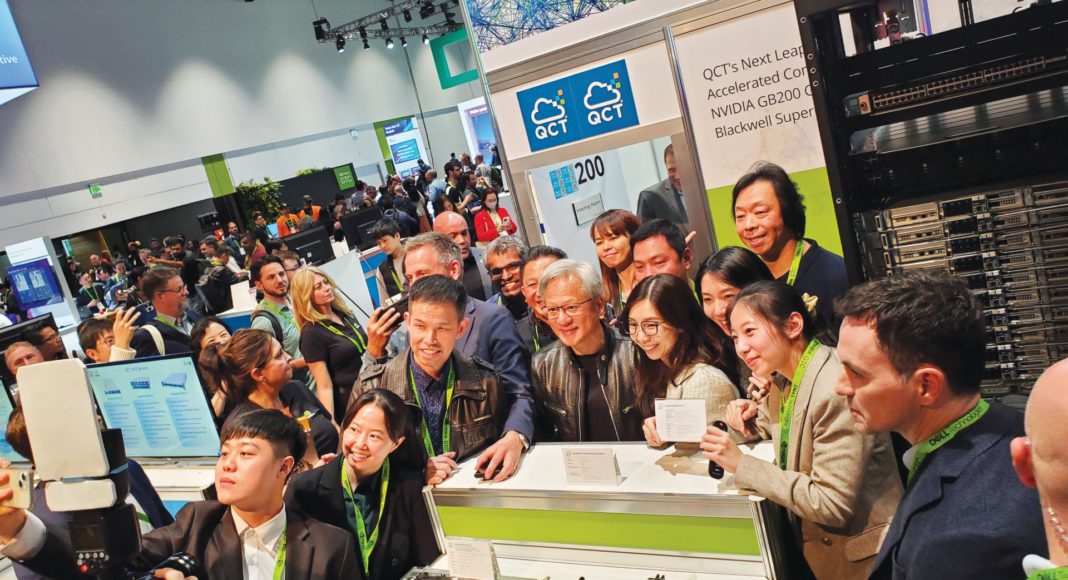More than 10,000 people flooded the streets of downtown San Jose last week for Nvidia GTC 2024, resurrecting both the neighborhood and my own personal memories.
Regardless of the numbers, GTC 2024 felt like the biggest convention to arrive in a long time. Restaurants, bars, coffee shops and public spaces were packed. Hotels were completely sold out. Union stagehands and A/V vendors were getting tons of work. This was the biggest graphics processing unit (GPU) technology conference ever and also the first one in San Jose since Covid.
Now that it was a full-blown AI conference, even more industry segments were represented, from agriculture to aerospace, from healthcare to smart cities, or even F1 racing. The techno-utopianism echoed the days when the web first started. People were just giddy.
For now, there was no discussion of the social and ethical implications of AI, probably because not yet enough people worldwide have lost their jobs because of it. At least not so far.
That said, with 900 sessions and 300 exhibits on the trade show floor, one did not have to be an AI evangelist, a particle physicist or a hardware engineer to find something interesting.
Downstairs in the convention center, just past the entrance, I joined Nvidia peeps for an elaborate operation to fill donation bags for the unhoused population. Hundreds of attendees stopped by to participate. We all stood in line, putting soap, shampoo, combs, toothbrushes and hand-written notes of kindness into compostable bags. The employees wore shirts that said “Project 365,” the successor to an older Nvidia Foundation initiative called Project Inspire.
Now, as long as my brain is not yet replaced by AI, the memories will continue to surface. Project Inspire was a tremendous community service program that Nvidia did several years ago. Every holiday season, instead of throwing a company party, Nvidia would organize a field trip to help renovate schools in low-income East San Jose neighborhoods.
Near the end of 2008, for example, CEO Jensen Huang took 1,000 employees to Overfelt High School. They repainted blacktop markings, created murals, installed multimedia labs, rebuilt a greenhouse and re-landscaped significant parts of the school. They touched up decrepit basketball backboards and donated 75 computers. They hauled in wheelbarrows full of sand for a brand-new volleyball court. Former San Jose Mayor Chuck Reed even participated. I showed up after it was all done, but the resulting column I wrote on this Metro page was a blast.
During subsequent years, Nvidia focused on improving schools in the Alum Rock Union District and other institutions that served those communities, places like Kelley Park and Veggielution. The Overfelt adventure, if I remember correctly, was the first time high school kids took part in the work.
That same year, 2008, Huang took the stage at NVISION, as the conference was then called, and announced then-new GeForce stereoscopic 3D hardware and software, but not before Chuck Reed appeared, thanked everyone for visiting San Jose, and encouraged attendees to go broke while spending all their money in the neighborhood.
For NVISION 2008, I likewise reported from the scene, banging out a story on deadline for Metro’s news section. I repeated the adventure in 2016, for this column.
At GTC 2024, now a dramatic AI convention in all respects, current San Jose Mayor Matt Mahan showed up to hype a city scheme that uses AI to fix potholes. Governor Gavin Newsom arrived and paraded through the exhibits. He even spoke with robots.
Neither of those two, however, was in the same ballpark as Jensen Huang, in terms of sheer rockstardom. This year, Huang’s keynote took place in the SAP Center, where 11,000 people watched him stand in front of a 40-foot-tall, 8K screen while introducing the Nvidia Blackwell platform, capable of trillion-parameter-scale generative AI. The event was a concert-style production, but unapologetically technical and designed for engineers and scientists. It was refreshing to hear a CEO totally nerd out and speak to his own developers, on their own terms.
The next day, when Huang toured the exhibit floor, a veritable mob of fans followed him every inch of the way, with everyone scrambling to take selfies, left, right and sideways.
In the end, I was inspired and I almost felt my memory improving.



